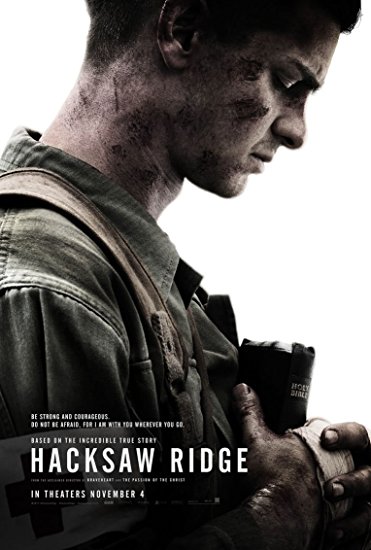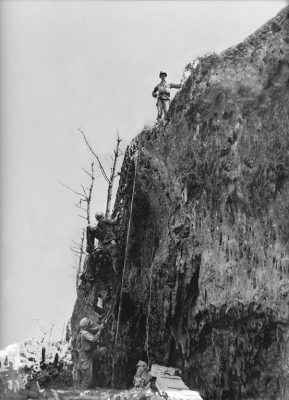27 Feb Hacksaw Ridge
1945. The Pacific. Because it is only 340 miles from mainland Japan, the island of Okinawa is a critical objective for the Americans, part of their plan to end the war with the invasion of mainland Japan. Unfortunately, the Japanese have been on the island for years preparing for such an assault, building their pillboxes, tunnels, and caves. The battle to capture Okinawa began on 23 March 1945 with all major combat operations ending three months later. It was the bloodiest battle of the Pacific War.
I watched the movie, Hacksaw Ridge, right after I finished Bill O’Reilly’s Killing the Rising Sun: How America Vanquished World War II Japan. The accuracy of historical details in this, the latest of his “Killing” series, is hotly debated by reviewers. Nevertheless, it is a good timeline of events leading up to and following the end of the war with Japan. One of the most memorable stories O’Reilly told is that of army medic Desmond Doss.
Doss was a Seventh-day Adventist. He wanted desperately to serve as a medic but refused to carry or use a firearm. When the Army classified him as a conscientious objector, Doss really did object, saying he was a “conscientious cooperator.”
In its “wisdom,” the Army placed Doss in a rifle company at Fort Jackson, SC. The idea was that he would change his mind about guns. The movie’s early scenes demonstrated the difficulties Doss encountered from the men in his unit. No matter how much he was abused and bullied, he stuck to his principles.
Right after seeing Hacksaw Ridge, I watched a video of the 2004 award-winning documentary about Doss: The Conscientious Objector co-written and directed by Terry Benedict. It was almost as good as the movie, and I highly recommend it.
In the movie, we see Doss and his unit arrive in Okinawa, but we didn’t know that they had been to Guam and Leyte first. As fierce as the fighting on those islands was, Okinawa was worse. The battles between the Americans and the Japanese were graphic and difficult to watch, but all I could think of was that what the men endured was worse. The documentary confirmed this. One of the men who served with Doss remembered, “We walked through blood. It was that bad. I still dream about it sometimes.”
When Doss and his unit came to Okinawa, their first challenge was to scale a sheer, solid coral, 300+ foot escarpment up to the ridge they were ordered to capture. To me, it was unbelievable that they had the physical strength to climb up it. Then once they were on the ridge, after battles more horrific than I can describe, they had to climb down again.
Is this a religious picture? The Roger Ebert reviewer, almost disparagingly, thought so. Yes, it is a true story about a man who, when he needed strength or a sense of purpose, read the Bible. Yes, Doss was a pacifist who was devoted to following the Ten Commandments, specifically Thou Shalt not Kill. The day after their first climb up to the Ridge, his unit was ordered to go up again, and the former bullies asked Doss to pray for them.
In fact, during the heat of the battle, Doss admitted that he was praying the whole time. “Please Lord help me get one more.” Later, a Japanese reported that he had Doss in his sights, but every time he tried to pull the trigger, his gun jammed.
So yes, it is a religious story. In order to do what he did, Desmond Doss needed help.
On Amazon.com: Hacksaw Ridge




No Comments